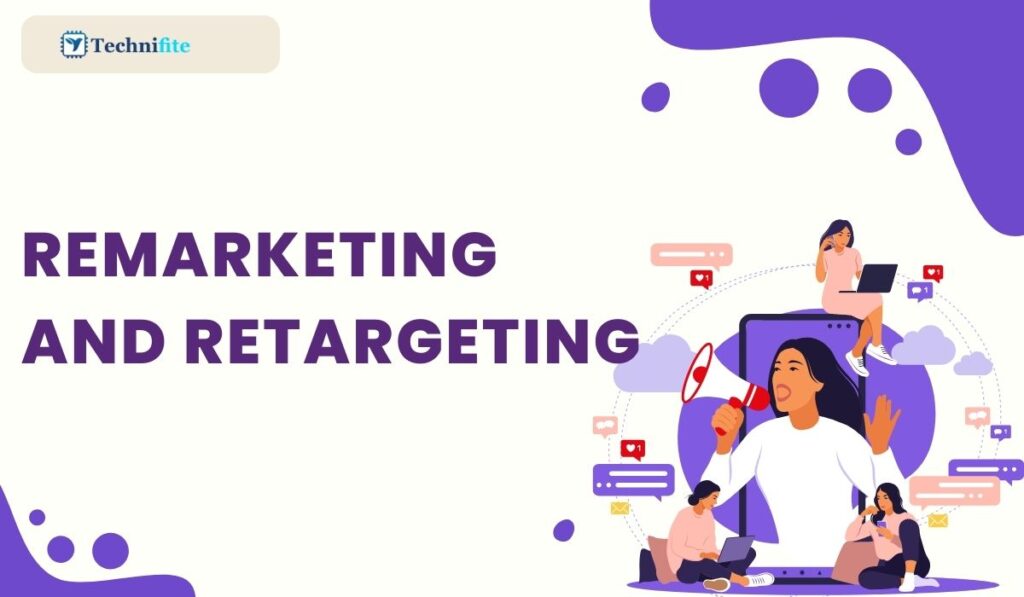In the vast and ever-evolving realm of digital marketing, capturing a potential customer’s attention is just the first step. Often, prospects visit your website or interact with your brand without making a purchase or completing a desired action. This is where remarketing and retargeting come into play. These strategies allow you to re-engage with those potential customers, offering them a second chance to convert. In this blog, we’ll delve into remarketing and retargeting, exploring what they are, how they work, and why they are invaluable tools for boosting conversions.
Understanding Remarketing and Retargeting
Remarketing and retargeting are often used interchangeably, but they have slight nuances.
- Remarketing primarily refers to re-engaging users through email. When a user visits your website or interacts with your brand but doesn’t complete an action (like making a purchase or signing up for a newsletter), you can use email remarketing to send them personalized follow-up emails. These emails can remind them of their previous interaction and encourage them to take action.
- Retargeting, on the other hand, typically involves re-engaging users through display advertising. It uses cookies and tracking pixels to identify users who have previously visited your website and then displays relevant ads to them as they browse other websites or social media platforms.
Essentially, both strategies aim to bring back potential customers who’ve shown interest but haven’t converted.
How Remarketing and Retargeting Work
Remarketing
Remarketing via email involves the following steps:
- Visitor Interaction: A user visits your website, interacts with your content, or adds items to their cart but doesn’t complete the desired action.
- Email Capture: During their visit, you collect their email address. This can happen through newsletter sign-ups, account creation, or simply by prompting them to provide their email for future updates.
- Email Sequences: You can initiate email sequences once you have their email. These emails are often personalized and can include reminders, incentives (like discounts), and calls to action to re-engage the user.
- Conversion: The goal is to guide the user to your website and encourage them to convert.
Retargeting
Retargeting via display ads follows these steps:
- User Interaction: A user visits your website, browses products, or views specific content.
- Cookie Placement: A tracking cookie is placed on the user’s device, allowing your ad network to identify them when they visit other websites.
- Ad Display: As the user visits other sites within the ad network (e.g., news websites or social media platforms), your retargeting ads are displayed to them. These ads often feature products or content they viewed on your site.
- Return to Your Website: The user clicks on the ad and returns to your website to complete the desired action.
The Benefits of Remarketing and Retargeting
Both remarketing and retargeting offer several key benefits:
- Increased Conversions: By re-engaging users who have already shown interest, you have a higher chance of converting them into customers.
- Personalization: Both strategies allow you to tailor your messages or ads based on the user’s previous interactions, making the outreach more relevant and engaging.
- Cost-Effective: Remarketing and retargeting often cost less per conversion than acquiring entirely new customers.
- Improved Brand Recall: Continuously displaying your brand or messaging to users reinforces your brand in their minds, increasing the likelihood of them returning to your site.
- Data-Driven Insights: These strategies provide valuable data on user behaviour and preferences, allowing you to refine your marketing efforts further.
Implementing Remarketing and Retargeting
To implement remarketing and retargeting effectively, consider the following steps:
- Segmentation: Divide your audience into segments based on their behaviour and interests. This allows you to create more personalized campaigns.
- Compelling Content: Craft compelling and relevant emails or ads that resonate with each audience segment.
- Frequency Control: Be mindful of ad or email frequency to avoid overwhelming users and potentially turning them off.
- Testing and Optimization: Continuously test and optimize your campaigns to improve performance over time.
- Compliance: Ensure that your remarketing and retargeting efforts comply with data privacy regulations like GDPR or CCPA.
Conclusion
Remarketing and retargeting are powerful strategies in the digital marketer’s toolbox. They allow you to re-engage potential customers who have already shown an interest in your products or services, increasing the chances of conversion. By leveraging the data and personalization opportunities these strategies provide, you can create more meaningful connections with your audience and drive better results in the competitive landscape of digital marketing.
Frequently Asked Questions
What’s the main difference between remarketing and retargeting?
While the terms are often used interchangeably, remarketing typically refers to re-engaging users through email, while retargeting involves re-engaging users through display advertising.
How do I set up a remarketing campaign via email?
You’ll need an email marketing platform to set up an email remarketing campaign. Collect email addresses from visitors to your website through sign-ups or account creation, segment your list based on user behaviour, and create personalized email sequences aimed at re-engagement.
What’s the role of cookies in retargeting?
In retargeting, cookies are small pieces of data placed on a user’s device when they visit your website. These cookies help identify users as they browse other websites within the same ad network, allowing your ads to be displayed to them.
Are there any privacy concerns with remarketing and retargeting?
Yes, privacy is a concern. Both strategies should comply with data privacy regulations, and it’s essential to provide users with clear opt-in and opt-out options. Transparency about data collection and usage is crucial.
How can I measure the effectiveness of my remarketing and retargeting campaigns?
You can measure the effectiveness through various metrics such as conversion rates, click-through rates, return on ad spend (ROAS), and the cost per conversion. These metrics provide insights into how well your campaigns are performing.


